The river filled its run with fog by morning:

But the sky was clear, so the fog started burning off as soon as the sun was high enough to peek over the trees.
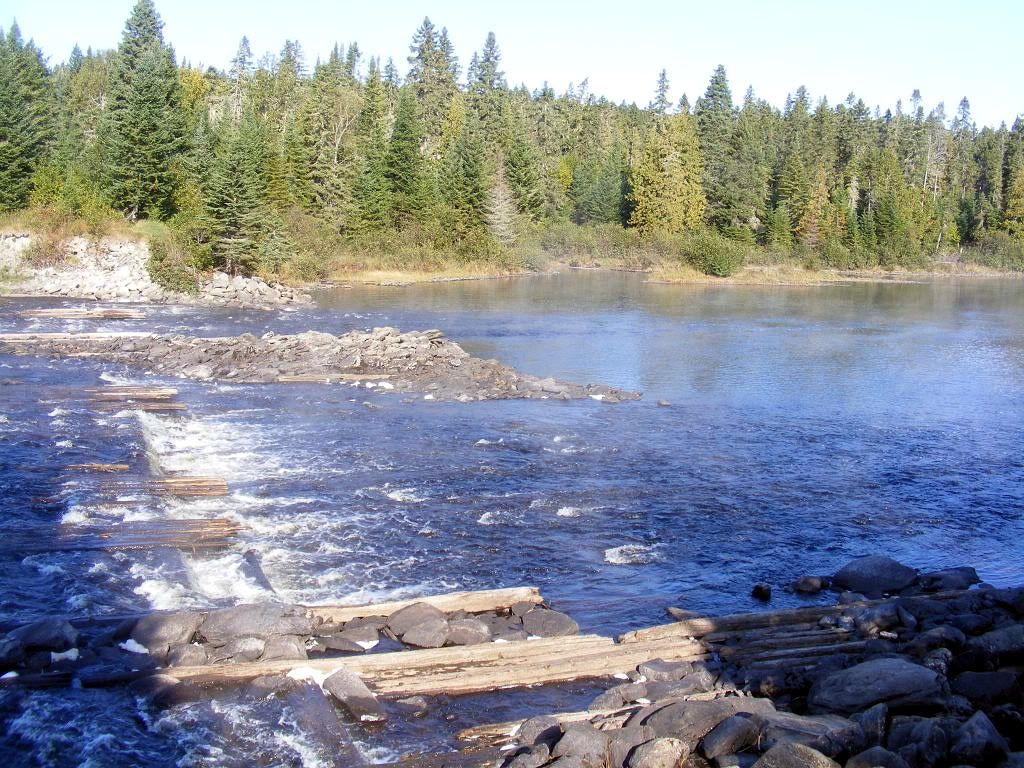
Before long, it was time to move on.
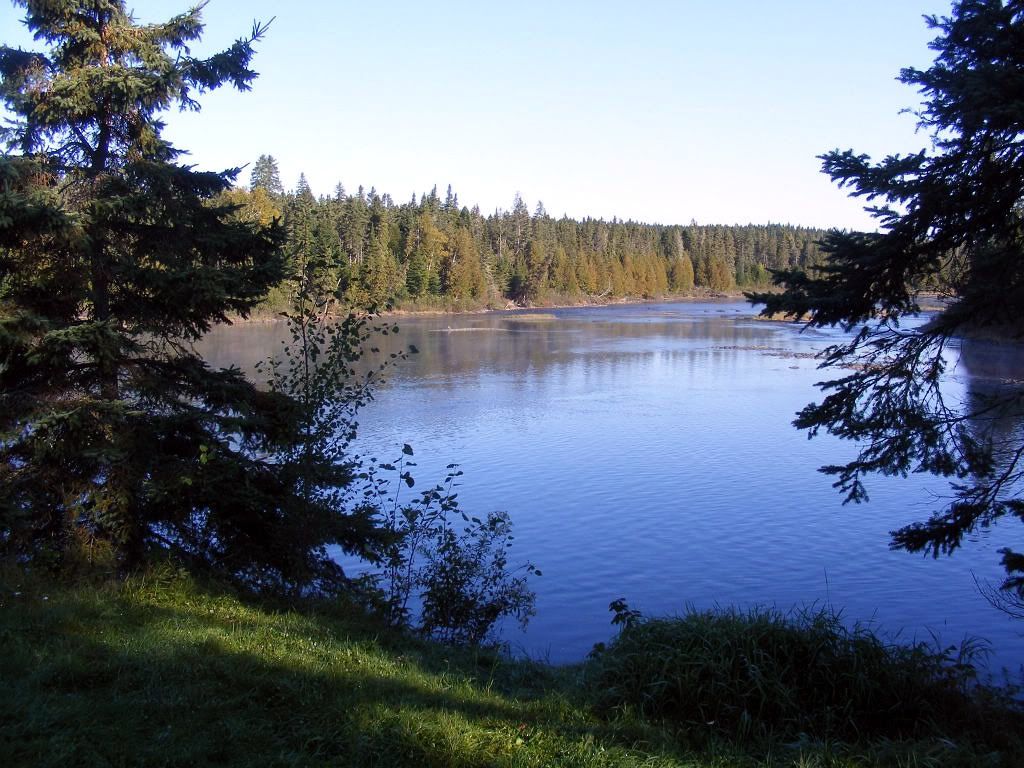
This fellow--- an almost-mature bald eagle--- was patrolling the river, looking for breakfast. He stopped in a nearby tree, probably to see if we were a threat or not.
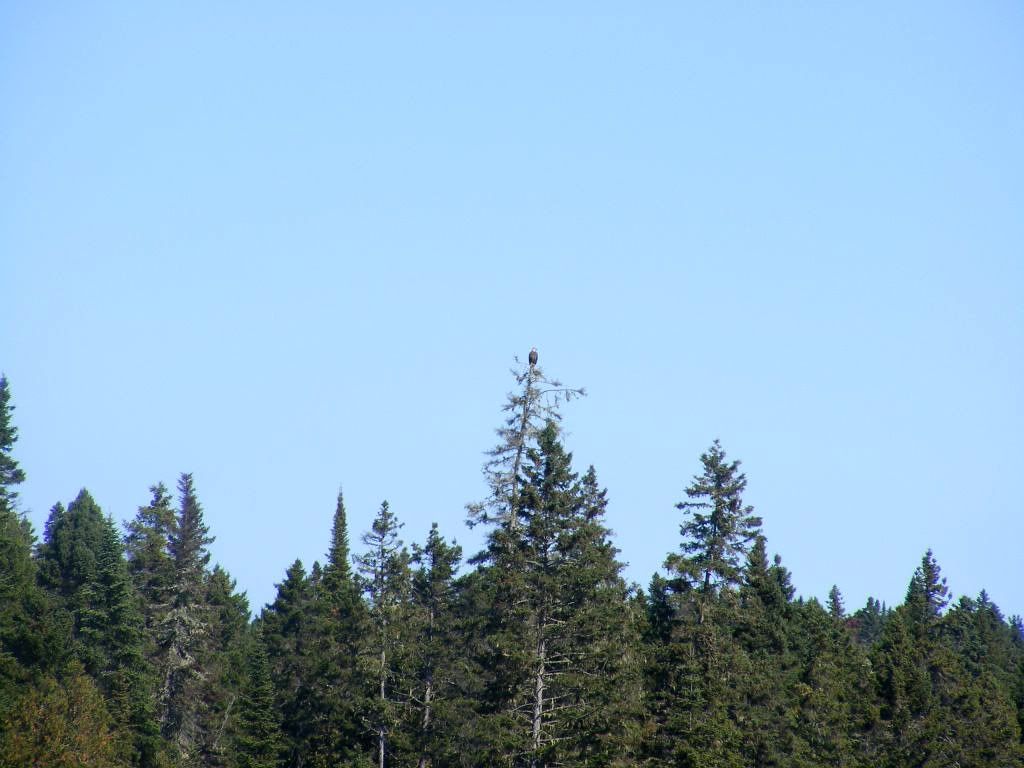
You can see he still has some brown on the top of his head, which won't turn completely white until he's fully mature.
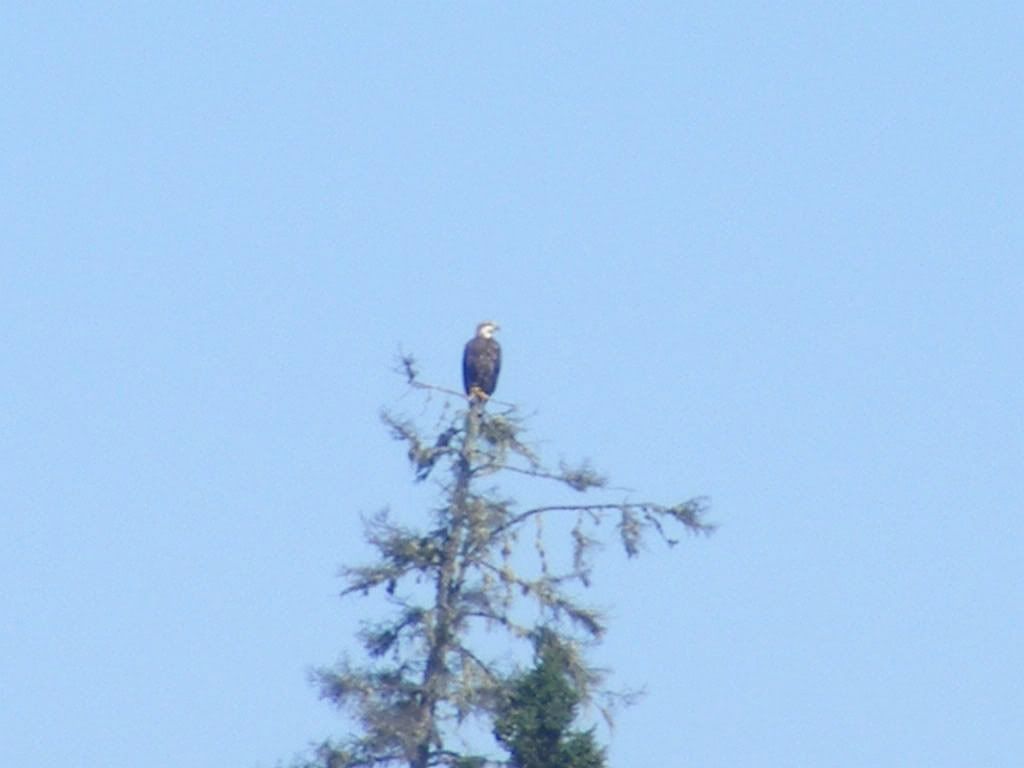
Off we go!
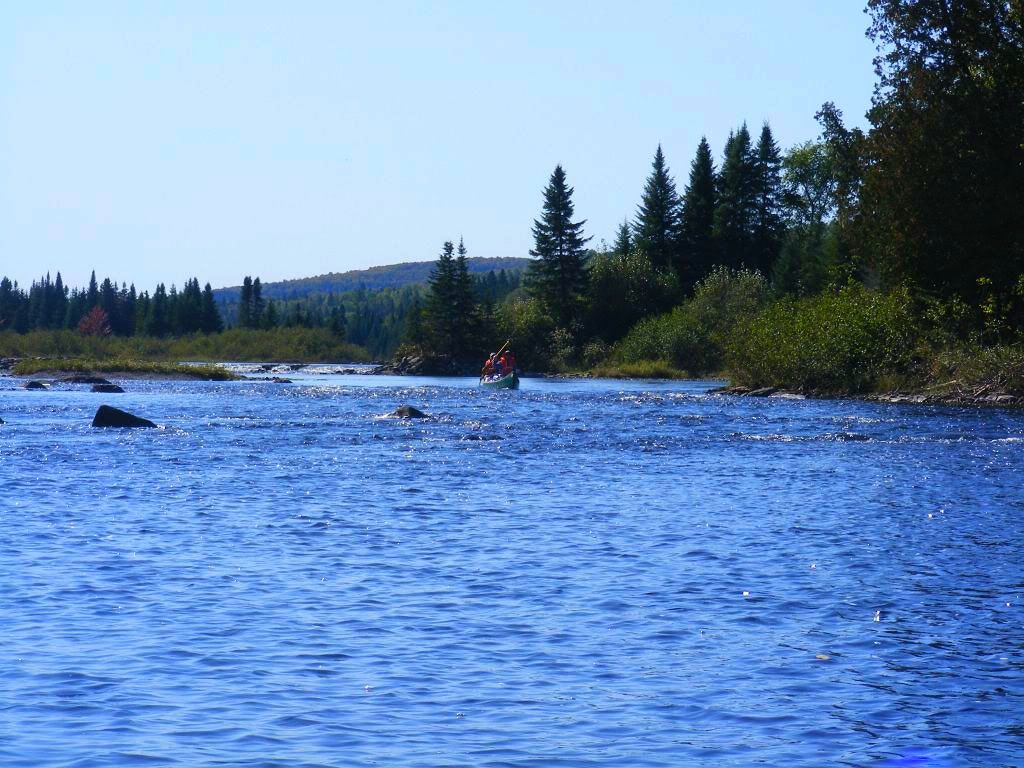
A few clouds moved in as the day progressed, but they only made the sky prettier.
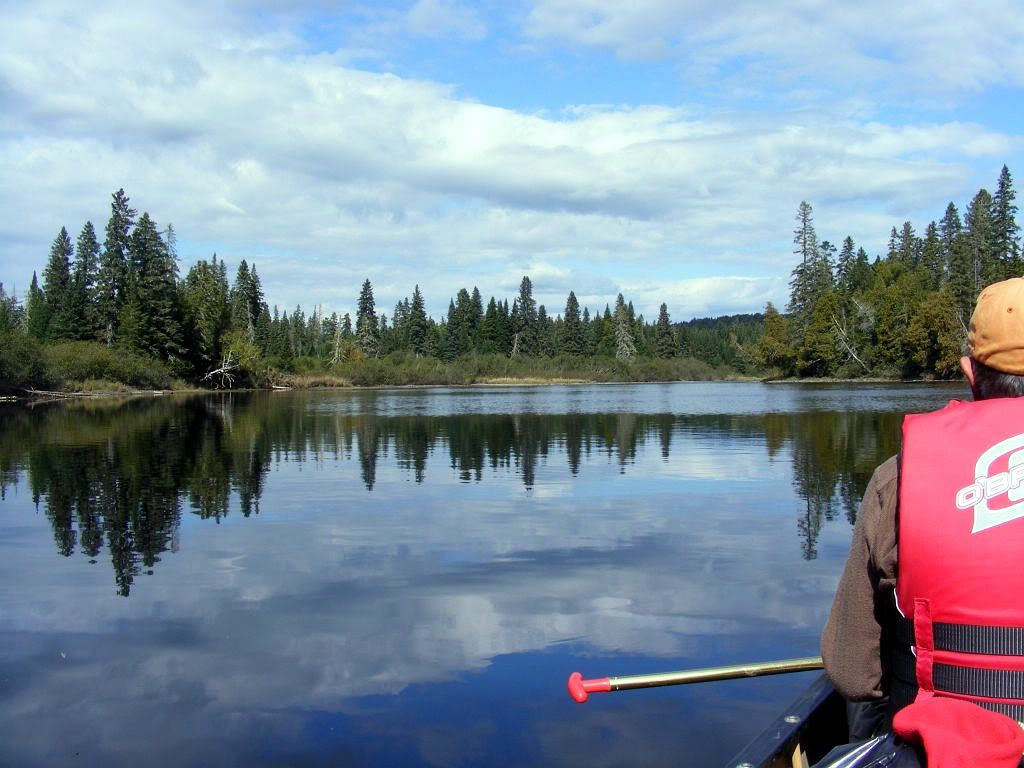
The river often split into channels around islands, and it was a tossup which way to go. Mostly, we left the current decide for us.

It was a pleasant and peaceful paddle.
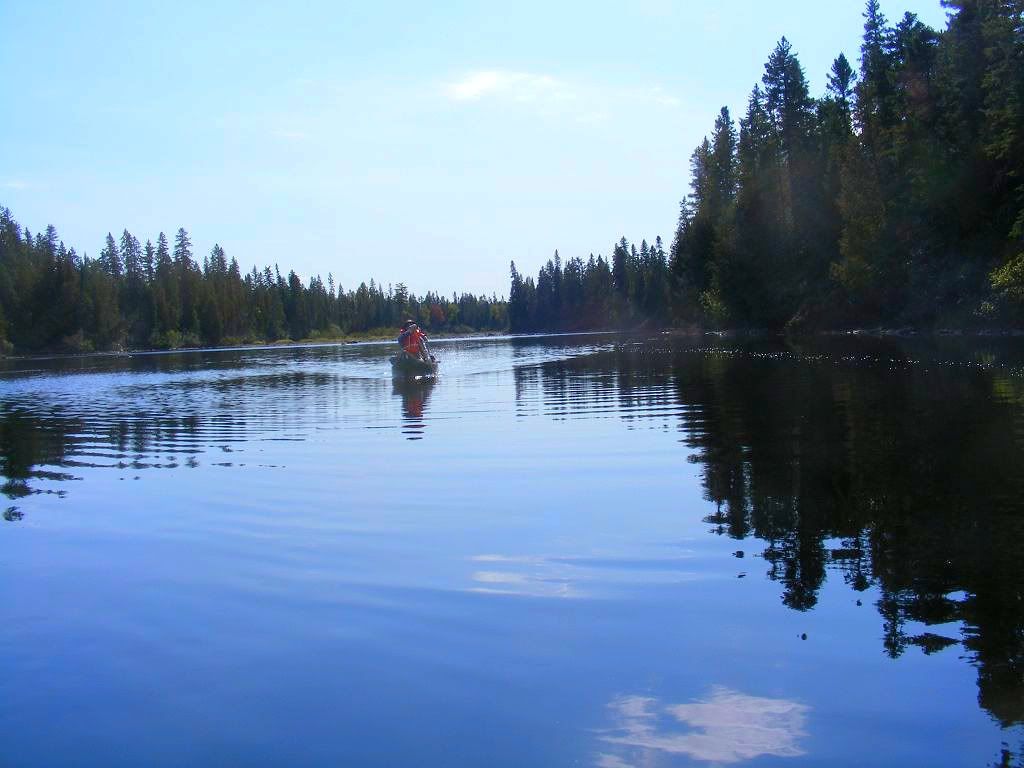
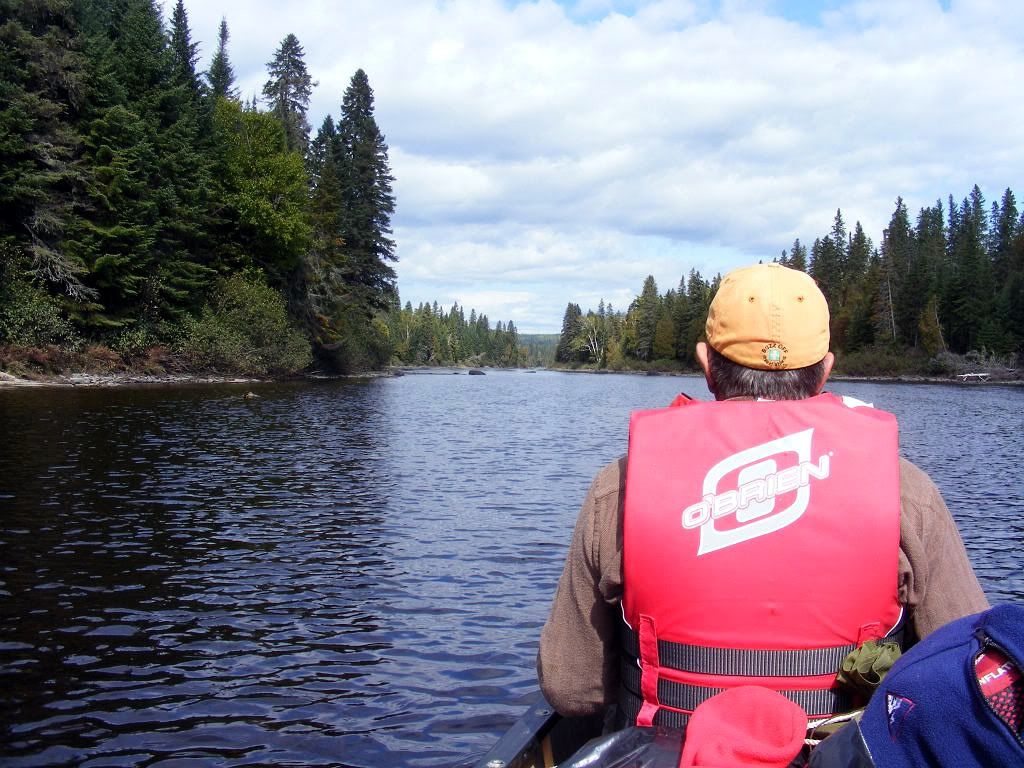
This very rocky stretch (below) caused both canoes a lot of trouble.
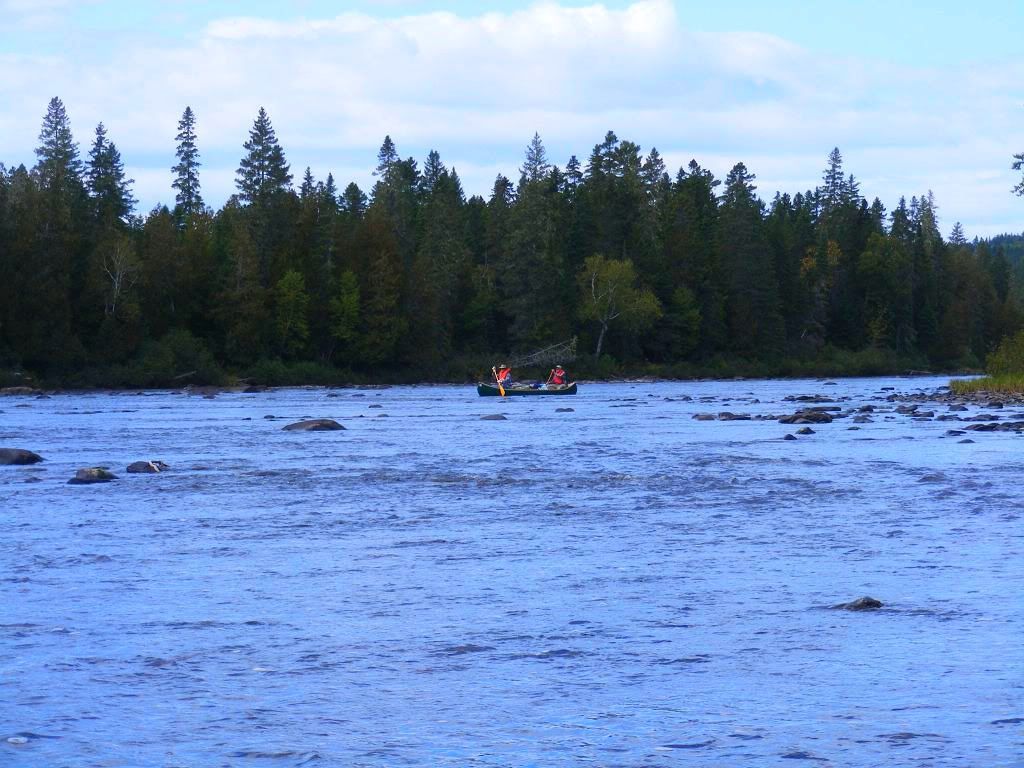
The current was strong enough to be a major problem here. The first canoe (mine) went down the center channel and found it treacherous. It was too fast for safe wading, with numerous deep potholes and sinks, but it was also mostly too shallow for good paddling: Most of the time you couldn't get more than a couple inches of your paddle in the water--- not enough to "bite" the water. Paddle-poling was problematic because the loose stones on the river bottom didn't give much purchase--- your paddle tip would mostly either sink in uselessly or skitter across the bottom rocks. We'd grind and bump against rocks and bars: When the front would snag, the rear of the canoe would slew sideways in the strong current. The heavily-laden canoe was very hard to maneuver.
At one point we got pretty thoroughly stuck in midriver. In dodging one rock, the front of the canoe got hung on another, and the rear immediately pivoted sideways, pinning us broadside against a third rock that was much too large to go over. To move the canoe, we had to overcome both the canoe's own weight and inertia (including two guys and camping gear), plus the considerable force of the water pressing against the side of the canoe. We almost rolled the canoe at the one point, trying to lever off the large rock.
We got through, dry and intact, but it was the toughest paddle of the trip, and the bottom of my canoe took a beating.
Below, the second canoe tries its luck at picking through the rocks and shallows. After seeing our trouble, they tried a run closer to the edge of the river. Look close and you'll see they got grounded on a bar, requiring some slippery footwork to get free.
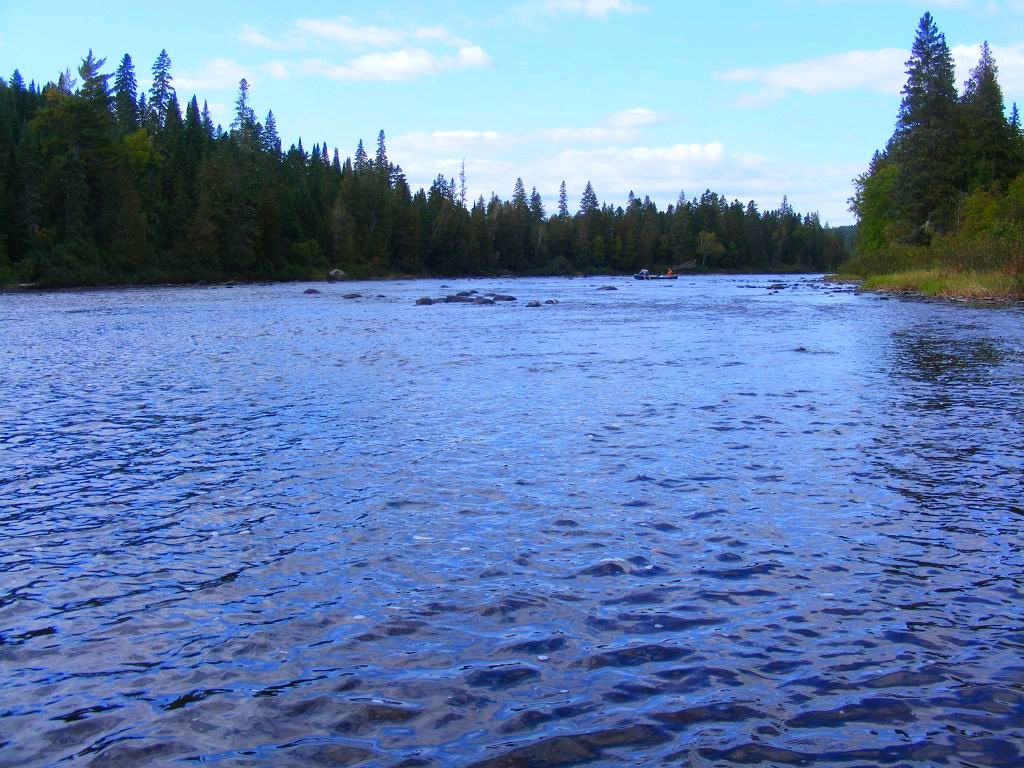
But they made it too, with nothing worse than wet feet.
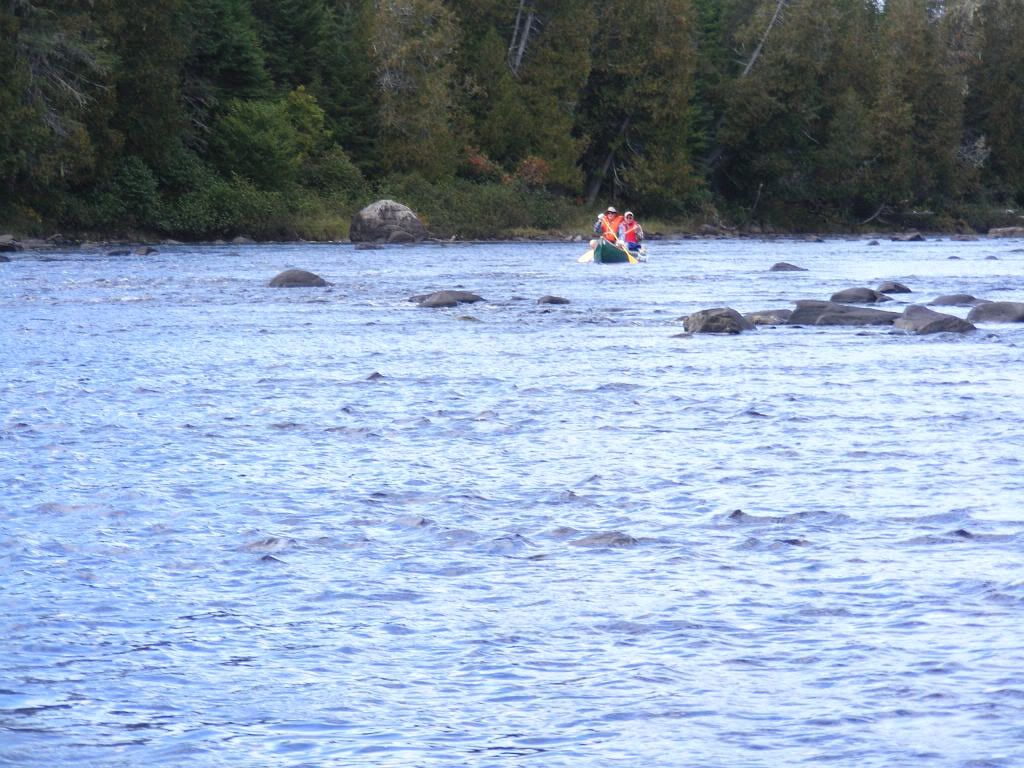
After a bit more struggle (I still feel it in my shoulders), we emerged onto Round Pond. When we reached the deeper water, I swear I heard my canoe sigh in relief, happy to have its plastic ass off the rocky bottom.
Besides easy paddling, Round Pond also features a modest stand of American Elms (you can see one on the left, below). The trees there are so isolated, they escaped the Dutch Elm Disease that decimated the native elms across the rest of North America last century. It's a very nice spot.
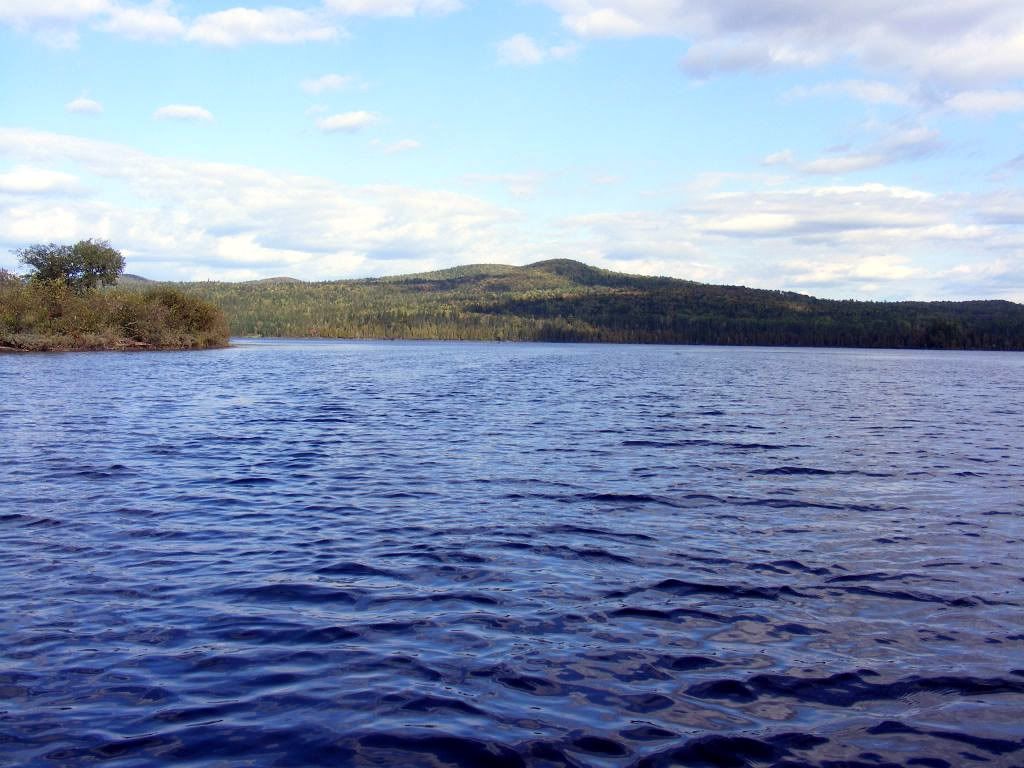
The pond has several campsites around its periphery (spaced far apart so campers can't see or hear one another). We picked one on the west shore so we'd get sun in the morning when it was coldest. When we set up, none of the pond's other camps were occupied--- our own private lake!

Remember those rocks? My 8-year-old canoe gained many fresh gouges and scrapes that day. I prefer to think of them as badges of honor, rather than as damage. ;-) There were no leaks, but I've nevertheless ordered repair resin so I can fill and strengthen the worst of the, um, "badges."
As the day darkened, a Guide and a couple of canoes paddled by (friendly waves all around); they took up residence on another part of the lake, far enough away so neither party could see or hear the other.
Here, a flight of ducks labors across the dusk sky, beating their wings like crazy.

Here, a flight of ducks labors across the dusk sky, beating their wings like crazy.

Round Pond has a healthy loon population, and we enjoyed hearing their calls at dusk and again at dawn. Loons are even worse fliers than ducks. Like penguins, loons use their wings for flying underwater; but unlike penguins, loons also can get themselves airborne--- just not very well, and only with a *lot* of effort.
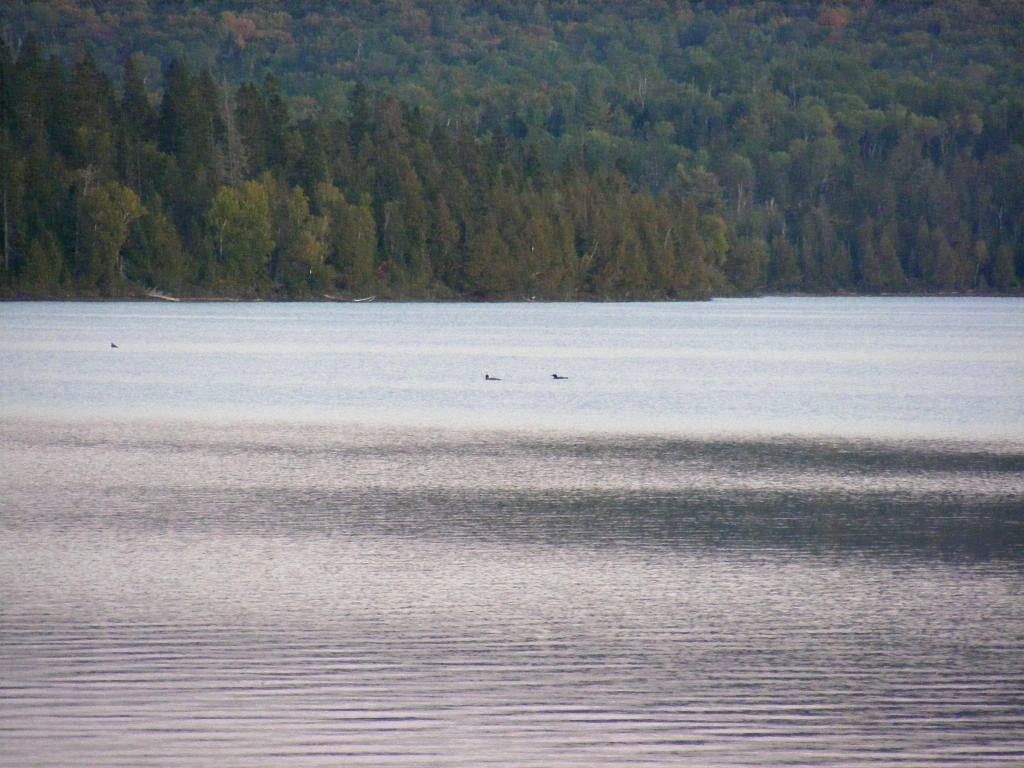
A noisy squadron of Canadian Geese honked its way across the water, looking for a place to spend the night. Effortless fliers, they put their energy into making a racket. And pooping.
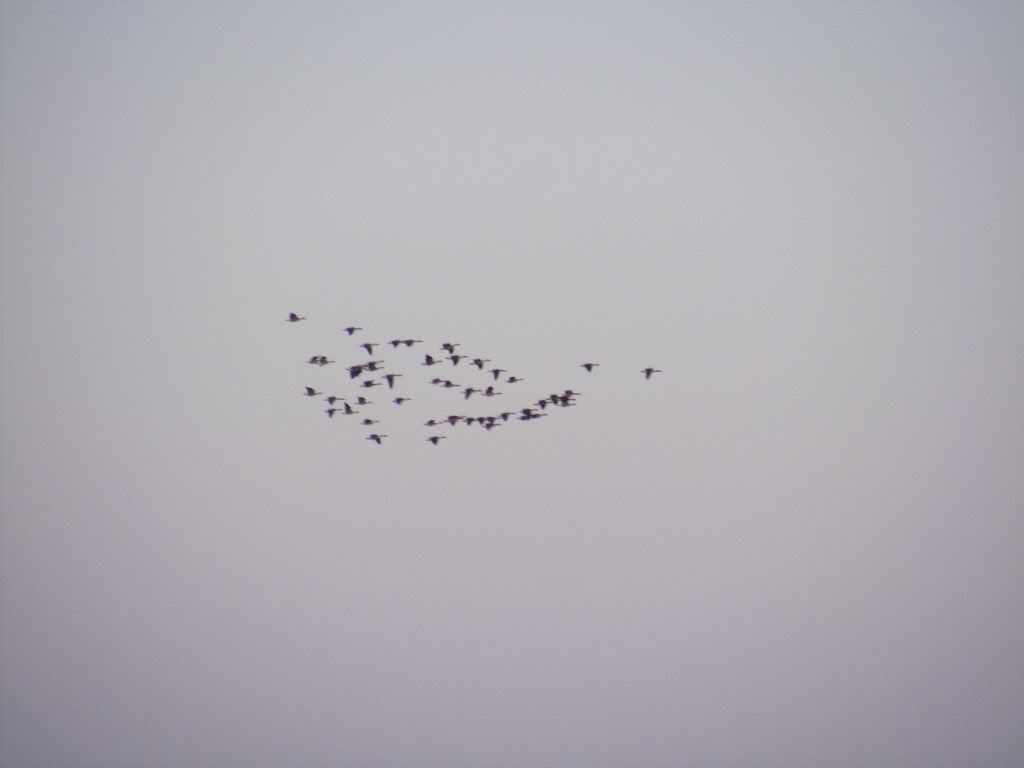
Here (below), they're switching into glide mode as they come in for a landing.
...and they're down for the evening, clamorously plopped behind some loons feeding in the middle foreground.
Am I the only one who wishes that Canadian Geese said "Eh!" instead of "Honk!"
With a good fire going and an ample meal in our bellies, we watched the gathering dark. Just as it was getting too dim for my camera's autofocus to work, a pair of beavers swam by:
You'll have to take my word for it--- but those really are beavers. :-)
And so ended a tiring but thoroughly pleasant day.
And so ended a tiring but thoroughly pleasant day.
Last post of this series tomorrow!
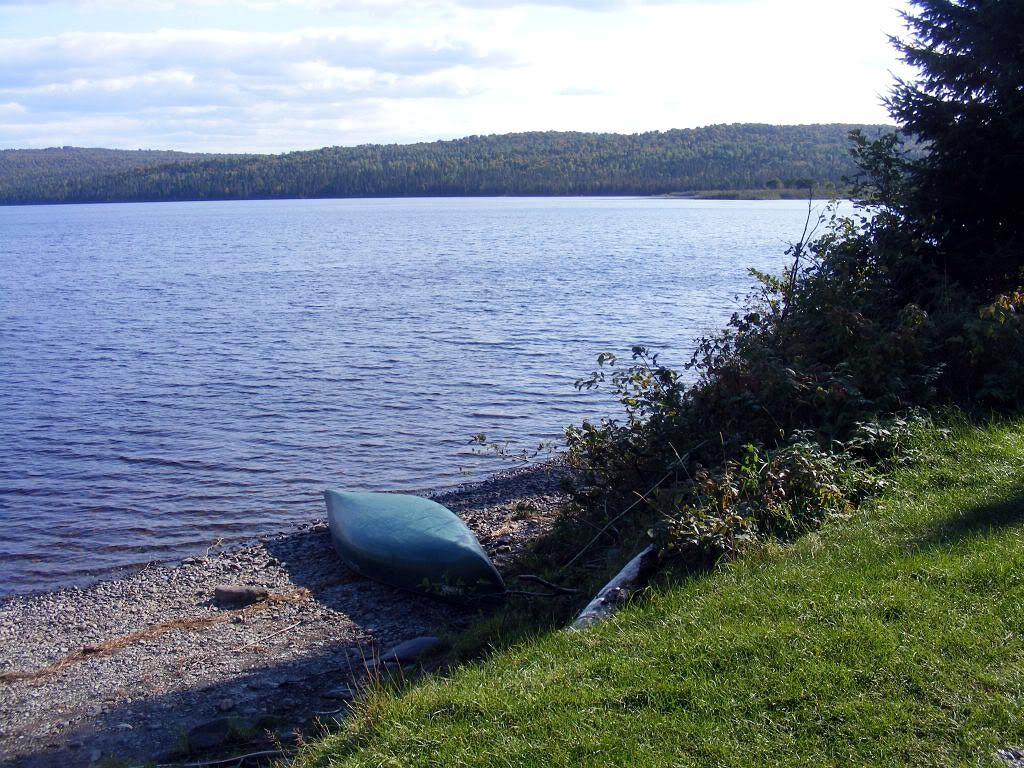



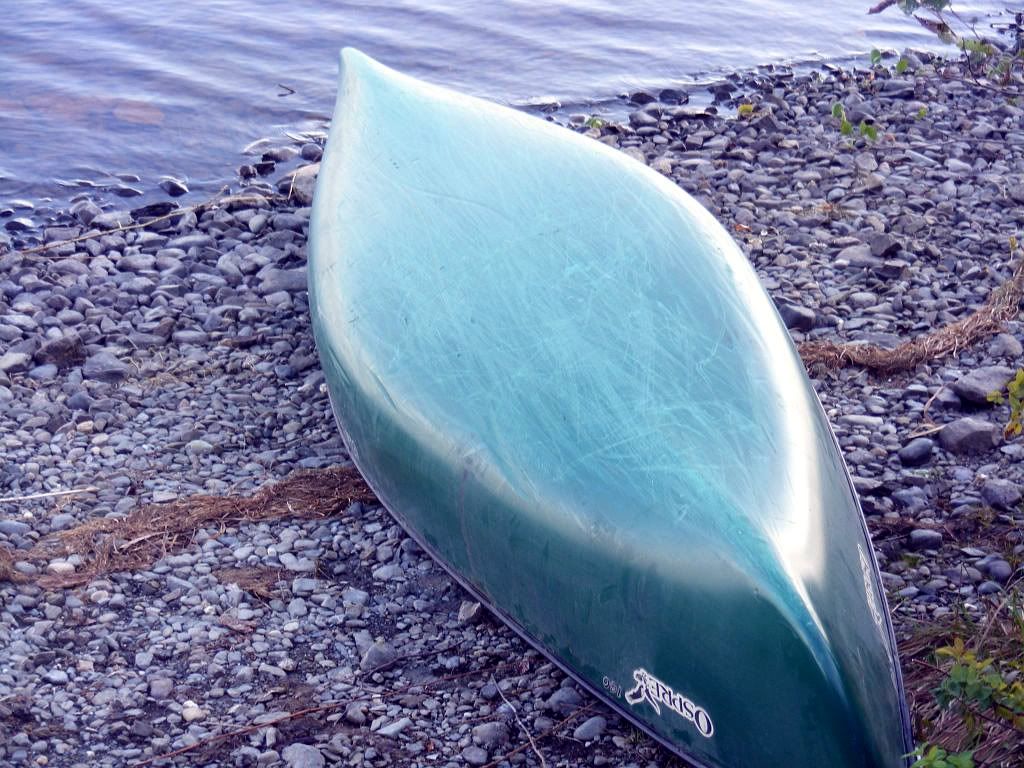
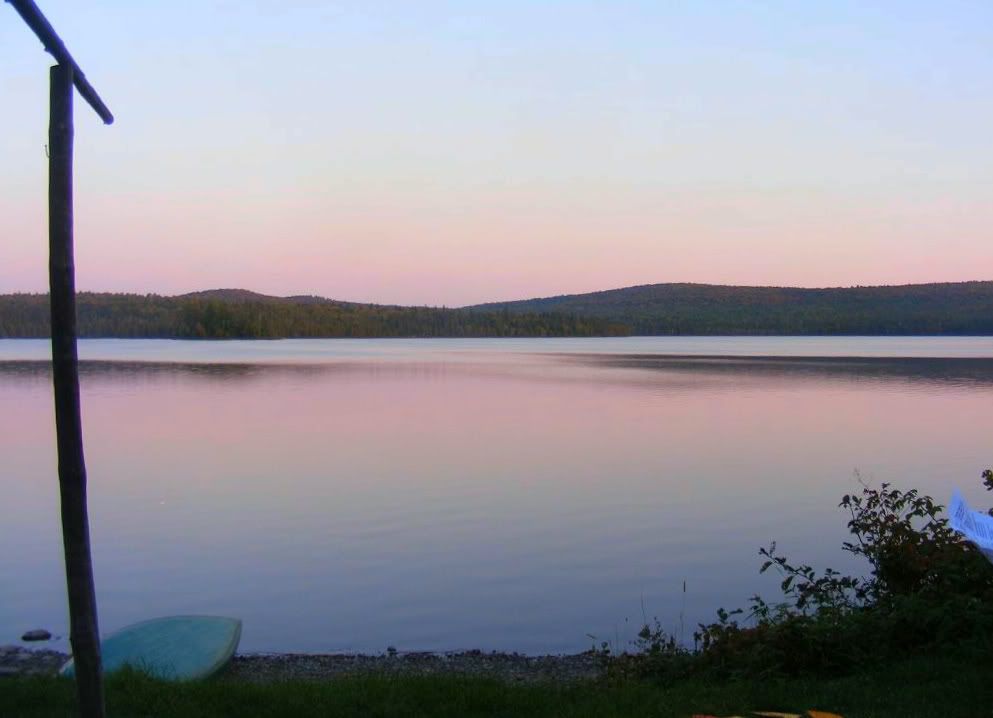
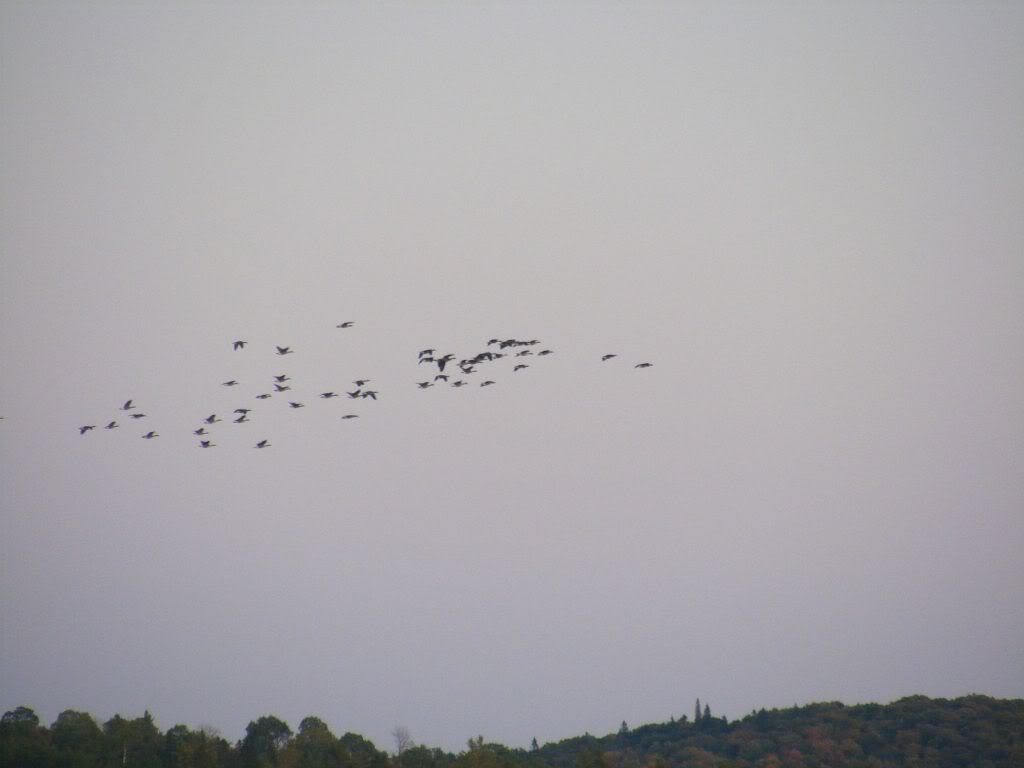
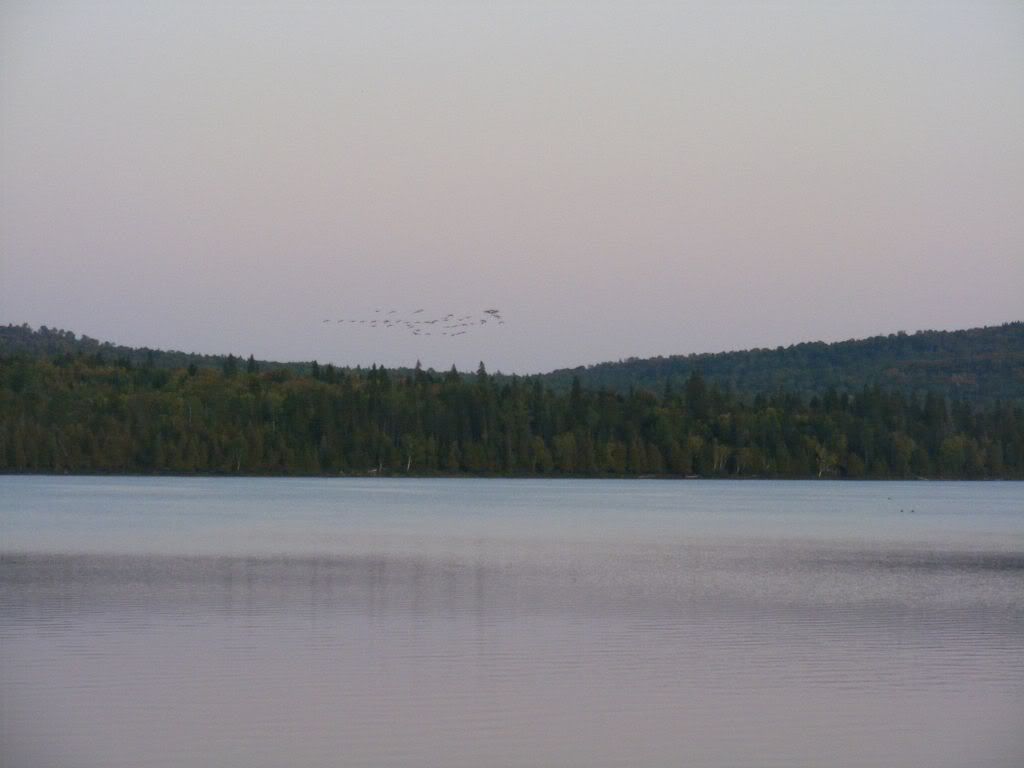
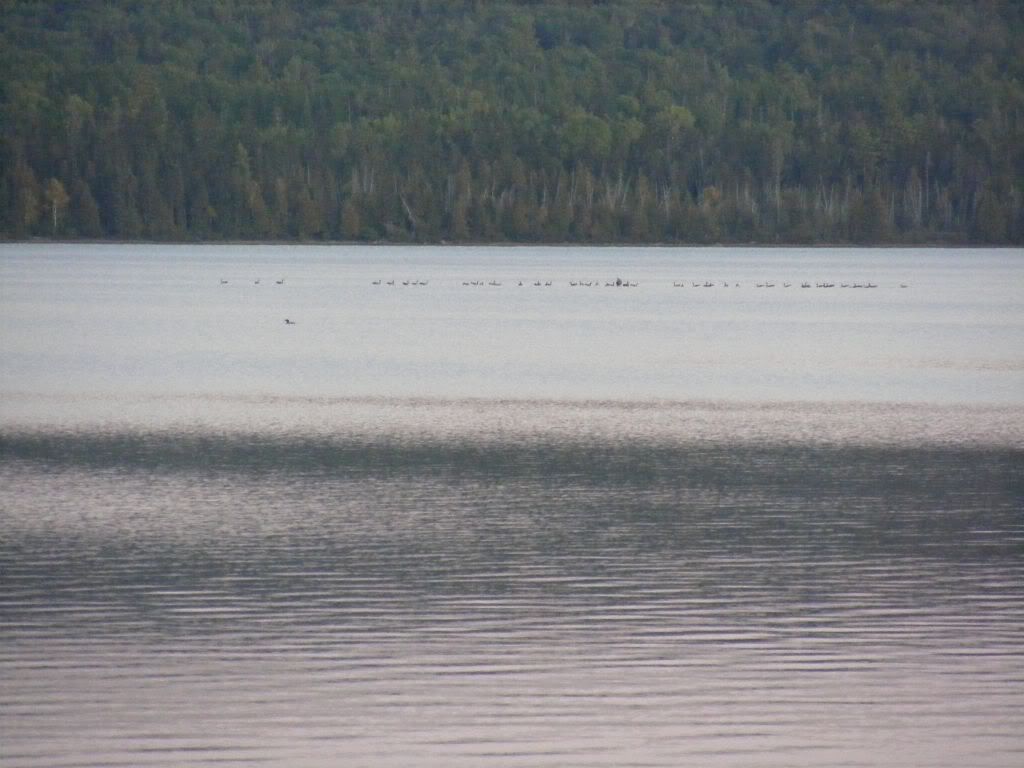


You've never lied to me before, so I'll take your word that those really are beavers.:-)) You got some really nice pictures. I really like the first one, fog on the river.
ReplyDeleteI wish you didn't have to take my word for it, but thanks for doing so. :-)
ReplyDeleteThere actually was a pair of beavers, swimming left to right as the light faded. Someone said something like "Look, beavers!" and the pair split. The lead beaver kept going, but the trailing one turned around and headed back the way it came. That's the one I tried to photograph, but I would have needed a bigger lens and to have the camera already set up in full manual mode to be able to capture the image.
Sometimes--- OK, often--- I can be a slow learner. The same pair swam by at dusk the next night, but I again missed the shot. Once again, one of our group said something like "There are the beavers again!" I knew my first shots (from the night before; the ones you saw) had been lousy, so I grabbed my camera and ran through the woods, as best I could in the dark, trying to get ahead of the beavers and at the water's edge for a better shot.
I got to a pretty good spot, and started climbing down the small bank to the water's edge.
As I was scrambling to the water's edge, the lead beaver came around a small point I was using as a blind and saw me. I could almost see the thought form in its tiny beaverish brain: "Stupid human."
It turned 90 degrees, headed out towards deep water and dived, slapping its tail hard on the water as it did so. Thwack!
By the time I got the camera up to my eye, all I had was a spreading ring of ripples to look at.
I got an A for effort, but an F for photography that night.
So all I have to show for the 4 beaver sightings are those 2 murky photos of one beaver in today's post.
I wonder if I could pass them off as the Yankee cousin of the Loch Ness monster? Maybe there's a newspaper in Maine that would buy it...
Nah. Just a pair of beavers, and a poor low-light photographer, is all.
Great story! Next time maybe you'll have learned and have the camera set. LOL
ReplyDeleteLovin your adventurous postings, along with the some of the greatest looking pictures of the great outdoors I've seen. Will be looking forward to your final posting tomorrow!
ReplyDeleteWhat did you guys do at the camp site besides look for firewood??
ReplyDelete>>What did you guys do at the camp site besides look for firewood?
ReplyDeleteI was the youngest in the group, and we paddled about 10 miles per day, so we weren't exactly brimming with energy at day's end. :-)
This was no KOA: We'd unpack the canoes, set up camp, gather wood for the night, get a fire going, prepare for darkness, make a meal, and then heap humorous insults on each other's lives and political views while abusing our livers until it was time for bed.
In the morning, we'd do pretty much the reverse, except for the wood gathering.
I'd also wander around a bit with my camera, as you've seen.
There was plenty to keep us all agreeably busy; and in that happy place somewhere between stressed out and bored.
The changing light and scenery also made for a quiet, natural entertainment. And fire-watching is something bred into every human's genes: The human ancestors who were afraid of fire died out in the last ice age. All of us today are the children of the humans who learned to love and master fire. Today, sitting by a campfire in the dark forest on a cold night is still ineffably satisfying on a wondrously primal level. Even the smell of a campfire is attractive; to our ancestors, it meant heat, warmth and companionship was nearby.
So what did we do? All that, and it was plenty.
Oh! I thought the last 3 days you stayed at the island camp site.
ReplyDeleteThanks for clearing that up.